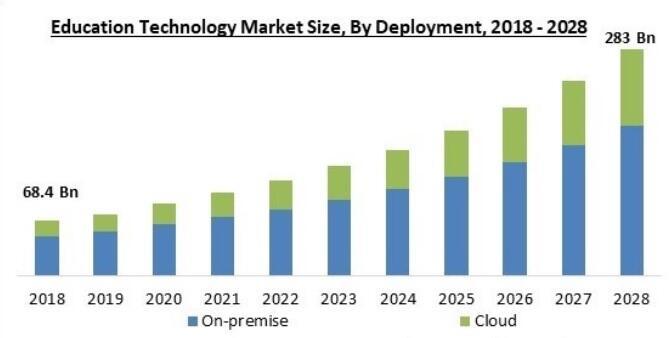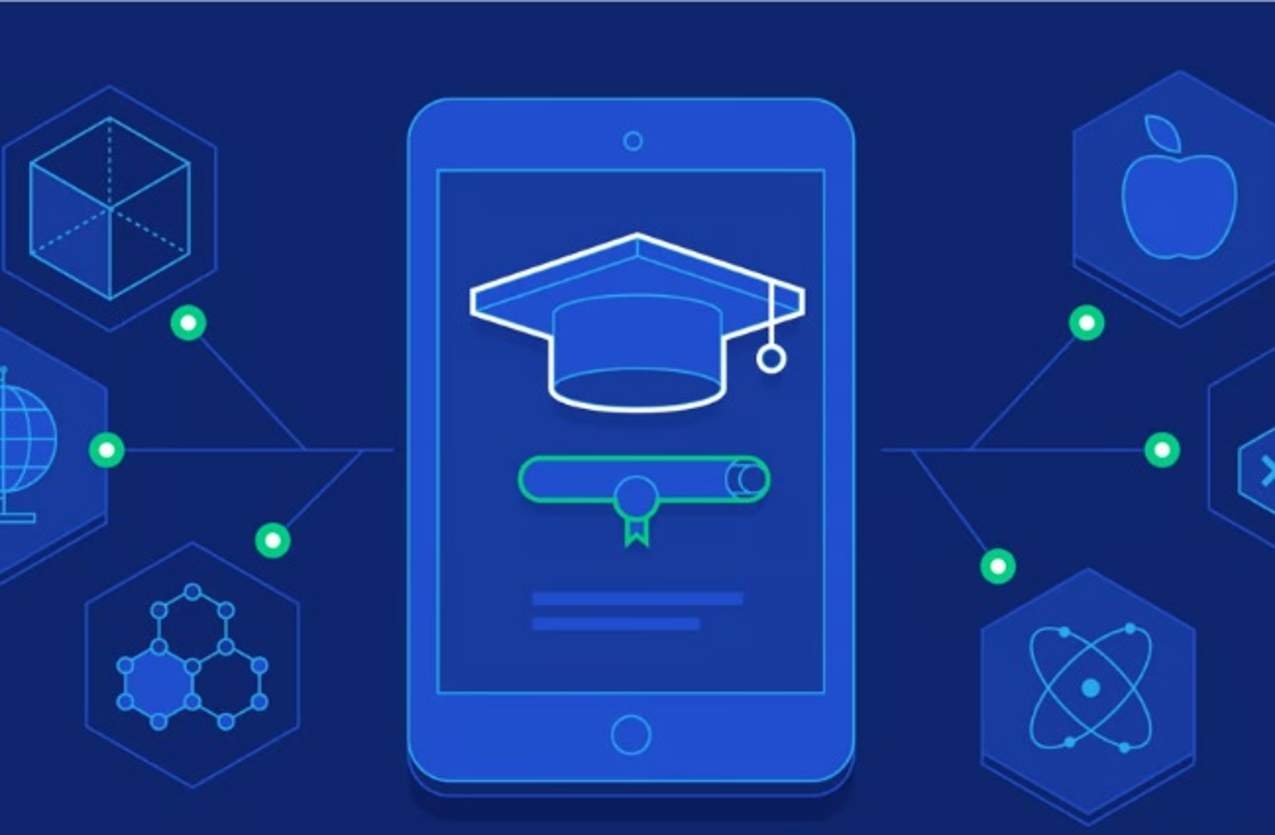EdTech has emerged as a major changer, transforming how students learn and teachers teach. EdTech is likely to undergo dramatic modifications in the next years, from AI-powered chatbots to virtual and augmented reality.
In 2022, the worldwide market for education technology (EdTech) reached a value of USD 123.40 billion. It is projected to grow at a compound annual growth rate (CAGR) of 13.6% from 2023 to 2030.
Today, we bear witness to the meteoric rise of EdTech, an innovative wave of technologies that is reshaping classrooms and transforming the way we learn.
As this transformative wave sweeps across the globe, it brings with it dramatic shifts, promising to bridge educational gaps, empower learners, and unlock untold potential.
EdTech, the fusion of education and technology, is transforming classrooms into dynamic spaces where creativity and knowledge flourish. From virtual reality to artificial intelligence, these cutting-edge tools are revolutionising the way students learn, paving the way for inclusive and personalised education experiences.
No longer constrained by geographic limitations or economic constraints, learners can tap into a vast repository of educational resources and expertise with a mere swipe of their fingertips. The barriers of time and distance are shattered, offering a lifeline to those previously marginalised by circumstance..
What Exactly Is EdTech?
The use of technology in education to improve the learning experience is referred to as EdTech, sometimes known as educational technology.
It covers a variety of digital tools and instructional software, such as online learning platforms, mobile apps, educational games, and interactive whiteboards.
In a blog post education and software development services provider “WeSoftYou” said that students may access instructional information and resources at any time, from any location, and at their speed
“The goal of EdTech is to make learning more interesting, interactive, and individualised by adapting to individual learners’ needs and preferences”
“Students are also more productive when they can choose their learning mode and content according to their needs through e-learning,”
Edtech Trends that Transform Education Industry
- Artificial Intelligence
Artificial intelligence (AI) is projected to change EdTech by offering learners individualised learning experiences. AI-powered chatbots and virtual assistants will give learners quick feedback, answering their queries and making tailored suggestions.
AI algorithms may evaluate data from learners, such as assessment performance and interaction with educational material, and make individualised suggestions on the content and resources they should engage with.
- Adaptive Learning
A conventional learning paradigm is built on the premise that all students should concentrate on the same subject matter and progress at the same rate. However, rather than the other way around, the educational system has to adjust to the demands of the students.
Adaptive learning is made feasible by data science and artificial intelligence, which modify the presentation of the subject depending on student performance. Students do better overall when the material is presented differently, and it also encourages them to concentrate on their strengths.
- Data Analytics
The use of statistical and computational tools to evaluate data to provide insights and suggestions for decision-making is known as data analytics.
Data analytics in EdTech may be used to monitor learners’ progress, identify areas of strength and weakness, and make individualised suggestions on the material and resources they should consume.
- Gamification
Gamification has the power to keep pupils engaged in their studies and challenged via constructive competition. Teachers utilise this technology to make learning enjoyable and participatory for pupils.
Teachers may provide learning pupils with immediate feedback and a feeling of success by incorporating gaming mechanisms like points, incentives, and levels with instructional material.
- Augmented and Virtual Reality
Virtual and augmented reality technology will revolutionize how students engage with instructional information.
Virtual reality immerses learners in an experience that allows them to explore complicated topics and ideas in a fun and engaging manner. For example, VR may be used to recreate a scientific experiment or a historical event, giving students personal experience.
Augmented reality may also be used to superimpose digital data over the actual environment, resulting in interactive learning experiences.
Edtech Market Report – Explosive Growth Projected:
The global education technology market is set to Skyrocket to $283 Billion by 2028 with a remarkable 15.5% CAGR during the forcast period.

Regional Outlook
The market is divided into different regions, namely North America, Europe, Asia Pacific, and Latin America, Middle East & Africa. In 2021, Asia Pacific emerged as a major contributor to the revenue in the education technology market. This growth can be attributed to the increasing adoption of computers and smart devices by the general public.
Countries like India, which are experiencing rapid development, have witnessed a significant rise in affordable broadband connectivity, leading to the emergence of numerous new businesses aiming to engage with the public. As a result of this trend, users now have the opportunity to access educational learning through the internet.
Edtech reverberating through the economy
In a seismic shift reverberating through the economy, the field of education finds itself at the epicenter of a groundbreaking revolution.
Recent reports from Market.us Scoop, highlighted the formidable role played by the EdTech industry in this transformative era. With an astonishing surge in growth, EdTech is swiftly altering the very fabric of knowledge acquisition for students.
The significant contribution of 6% to the GDP in 2023 underlines the EdTech industry’s potential to drive economic growth and create new job opportunities.







